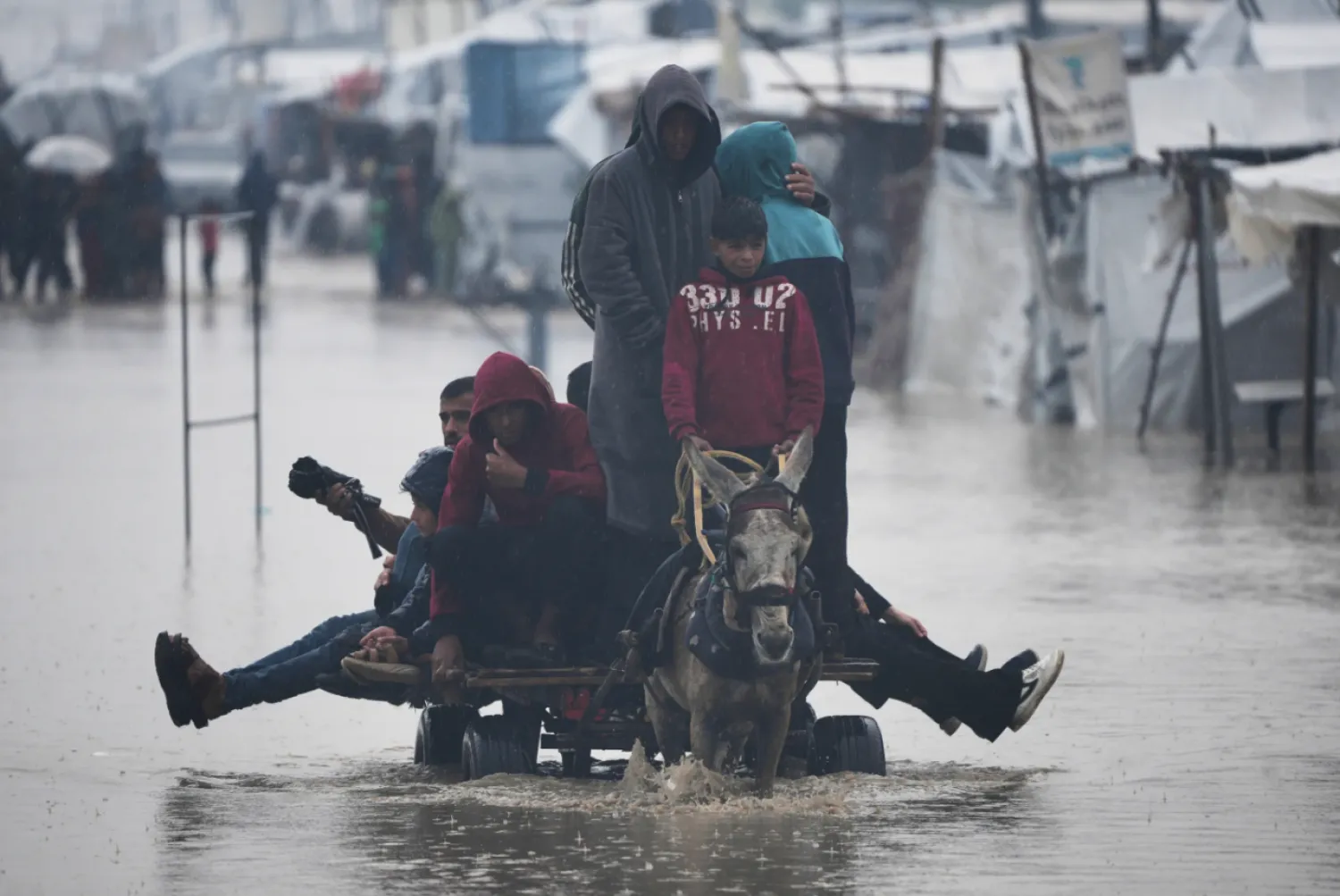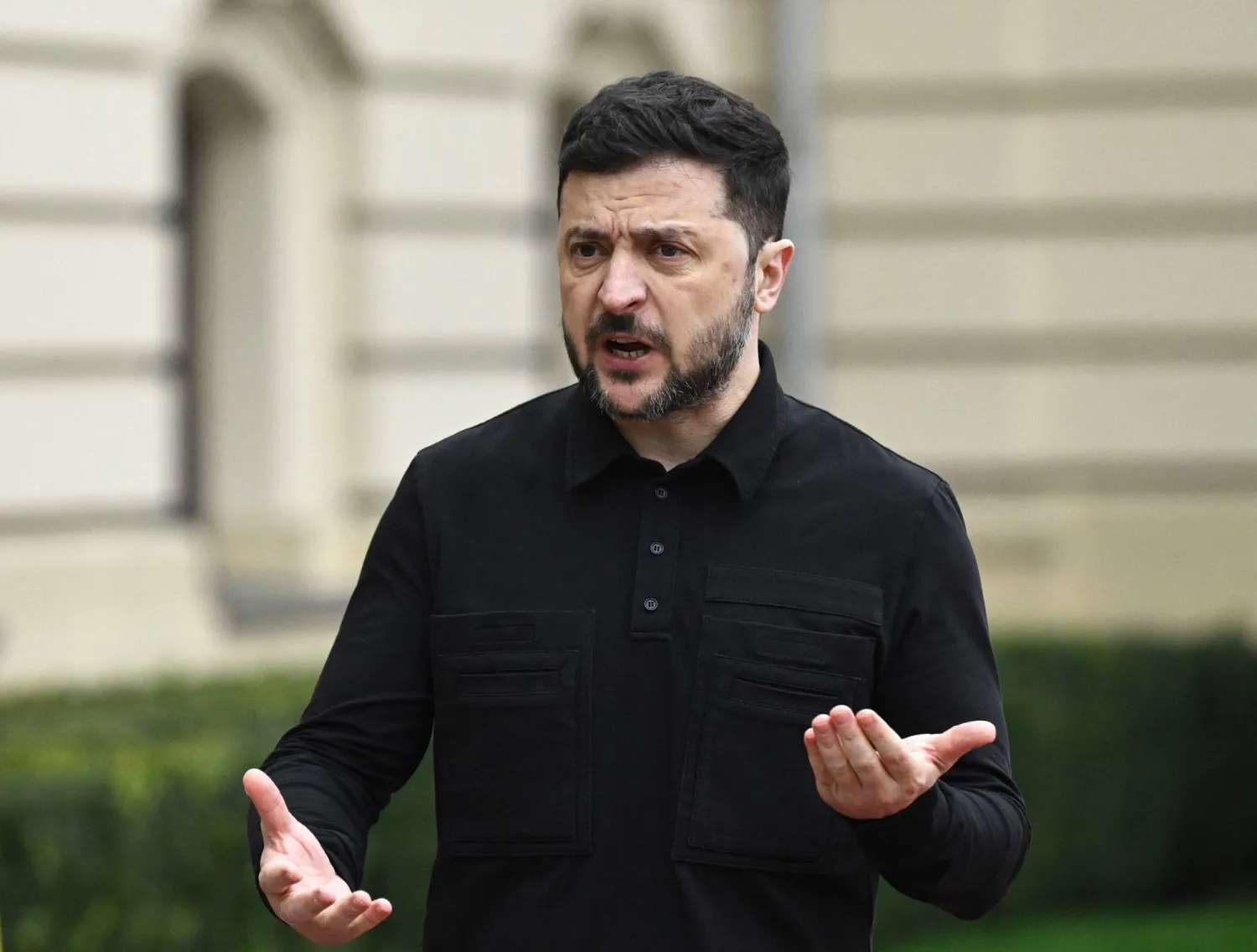From the Raid Department that falls under the Military Security’s Branch 215—commonly referred to as the “Branch of Death”—Asharq Al-Awsat began its tour of the prisons of the ousted Syrian president, Bashar al-Assad.
We were accompanied in this journey by a former detainee who had been transferred between this branch, Military Hospital 601—dubbed “The Slaughterhouse”—where the infamous “Caesar” photographs were taken, and finally the larger slaughterhouse, Sednaya Prison.
The former detainee is Munir Al-Faqir, an engineer from Damascus and a co-founder of the Association of Sednaya Prison Detainees and Missing Persons. He shed light on the inner workings of Syria’s prison system, revealing how detainees—both alive and dead—are meticulously archived, while their families are extorted for immense sums of money estimated at nearly $1 billion, according to the association.
Amid the systematic abuse of documents, the chaos of legal frameworks, and over 100,000 forcibly disappeared persons, local and international organizations, as well as Syria’s current administration, face a colossal challenge in establishing truth commissions, ensuring accountability, and laying the foundation for comprehensive transitional justice.
More Than Just Sednaya
The Syrian prison experience over the past fifty years cannot be summed up by Sednaya Prison alone, despite its unique horrors. Sednaya represents only the tip of the iceberg, beneath which lies a network of security branches, detention centers, and prisons no less terrifying in their brutality.
If anyone could be considered the “ultimate survivor” of this hell, it would be Al-Faqir. Over two years, he was transferred between multiple detention centers, starting with Branch 215, the “Raid Department” of Military Security, followed by Military Hospital 601 and finally Sednaya.
When asked how he managed to survive, Al-Faqir says: “It’s a miracle I made it out alive from the first two branches. When I reached Sednaya, and my family learned of my whereabouts, the extortion business had already begun. My family, like many others, tried to secure my release with money. I was lucky enough that it worked for me.”
Remarkably, the head of the military court, Major General Mohamed Kanjo Hassan, who sentenced Al-Faqir to Sednaya in a trial lasting barely two minutes, was the same official who approved his release after receiving a substantial bribe through an extortion network.
Al-Faqir, to this day, remains unaware of the charges against him. He explains:
“I still don’t know my alleged crime or the length of my sentence. Throughout my detention, I was never informed of anything and was prohibited from asking. I could only guess based on the questions directed at me, but I never learned the truth.”
A Marketplace of Extortion
Al-Faqir outlines three types of release cases. Those include presidential pardons, which are extremely rare and granted only in exceptional circumstances to specific individuals; Prisoner exchanges, which are equally rare, involving swaps between detainees held by the regime and those held by opposing factions; and financial extortion - by far the most common.
He explains: “General Kanjo Hassan, who amassed immense wealth and properties, worked with brokers to identify high-value detainees. These brokers would contact the families—primarily mothers, followed by wives and sisters—to negotiate ransoms.”
According to Al-Faqir, his organization has documented this phenomenon and published a report to raise awareness among families about the extortion networks. They estimate that between 2011 and 2020, these networks extracted roughly $1 billion. While other human rights organizations estimate even higher figures, the association’s calculations are based on a statistical sample, not a comprehensive survey.
The extortion process thrives on the families’ hopes of finding their missing loved ones and their fears of losing another son.
Al-Faqir explains: “The marketplace begins with small payments for vague information about the missing person. As the family’s resources dwindle, they are either promised the detainee’s release or told that the person has died or cannot be located.”
For some families, the ordeal ends with a death certificate or the delivery of a body for burial—often after signing documents stating the death was due to natural causes like heart failure or kidney failure. However, most families are neither notified of the death nor given a body to bury.
A Descent into Horror
Leaving the well-organized bureaucratic section of the detention system, the journey takes a grim turn into the lower floors of Branch 215. Here lie the dormitories, solitary cells, and a former shooting range repurposed into mass detention and torture chambers. During peak periods, it also served as an execution site, earning Branch 215 its “Death Branch” reputation.
The stench of death still lingers in these spaces, with dark walls bearing the marks of unspeakable past atrocities. Al-Faqir recalls moments of overwhelming rage, punching his cell door until his hands bled, only to compose himself and continue his story.
In these overcrowded cells, blankets stamped with the UNHCR logo serve every purpose—spreading diseases, lice, and bacteria. Open wounds fester, and gangrene often sets in.
Al-Faqir says: “Many times, a detainee would die, and their body would remain in the cell for hours or days before being removed. The corpse would lie on these same blankets, which were later reused.”
In the same detention center, solitary cells resemble upright graves—narrow spaces that leave no room to move. Yet for many detainees, these cells offer a reprieve from the horrors of communal living and the unsanitary conditions of the shared blankets.
Generalized Terror Beyond the Prison Walls
One of the most insidious aspects of Syria’s decades-long systemic cruelty and widespread terror lies in the deliberate placement of detention centers within residential neighborhoods in Damascus. These locations, often tucked between branching streets, seem designed to normalize the violence within them, embedding it into the everyday lives of ordinary people. While Sednaya Prison is distant from public view and imagination, these security branches are situated in the heart of the capital, standing alongside “normal” life outside their walls.
To reach Branch 215, located within the security district between Kafr Sousa and Mezzeh—a site that marked the beginning of Munir’s grim detention journey—we traveled along the famous “Mezzeh Highway,” made a slight turn, and entered through an open gate on a public street. It felt as if we were heading into any other government office in an open, public space. Upon leaving the darkness of the detention corridors and stepping back into daylight, administrative buildings appeared on the rear side, their windows overlooking the compound’s yards. Office workers would likely sneak glances at the scene below during coffee and cigarette breaks before returning to their meticulously organized bureaucratic tasks.
On another side, residential buildings with shaded balconies—crowded with hanging laundry—also overlooked the branch. The sight of the laundry evoked both a strange sense of normalcy and a pervasive fear.
Many stories circulate about families who sold their homes and moved to escape the oppressive proximity to these centers. For some, it was the inability to endure the sounds of torture seeping into their living rooms and bedrooms that pushed them away.
“Trauma Section” and the Caesar Photos
A leaked directive from mid-2018, dated December 18, 2012, issued by the Military Intelligence Branch, instructs all affiliated security branches to report the death of any prisoner on the same day. The directive mandated direct communication with the branch chief via Telegram, including details such as the reason for arrest, investigation results, and cause of death.
This document, now used by human rights groups in international prosecutions, serves as explicit evidence of the systematic nature of detainee deaths. It also confirms that these deaths, in their overwhelming numbers, occur with the knowledge and direct approval of the highest levels of leadership.
Branch 215 played a central role in this “production line” of death, followed by the “Trauma Section” at the Mezzeh Military Hospital (formerly known as Yusuf Al-Azma), also referred to as Hospital 601.
According to Al-Faqir: “This is where deaths were processed medically, or patients were deliberately finished off under the guise of medical care.”
The Trauma Section was established after the 2011 revolution within the hospital’s old building, which dates back to the French Mandate era. Its purpose was to “treat” detainees as the systematic torture and killings in the security branches escalated, and as the number of victims increased. The section became essential for “disposing” of corpses and easing overcrowding. Simultaneously, it became an additional site for “medical torture” and a place where bodies were stored, archived, and numbered—many of which later appeared in the Caesar photos taken in the hospital’s courtyard.
Al-Faqir explained the role of medical staff in the Trauma Section.
“The supervisors were primarily security officers and military doctors. The section was managed by two security agencies: Military Intelligence and Air Force Intelligence. Each had its own ‘Angel of Death,’ as we used to call them because of their penchant for killing and their creativity in doing so.”
According to Munir—corroborated by other sources—a significant number of doctors, nurses, and even female nurses collaborated extensively with the military. These medical professionals would guide officers on how to inflict fatal injuries without leaving visible traces of torture, such as inducing internal bleeding, kidney failure, or asphyxiation. This allowed deaths to be officially recorded as “natural causes” in medical records, completing the meticulous administrative and bureaucratic cycle of murder.
While we waited for about two hours at the hospital’s main gate, many cars arrived with various requests: some came to hand over individual weapons, others sought non-existent medical services, and one former employee tried to retrieve personal belongings from her old office in exchange for handing over her office keys. Like others, she left disappointed. Only those turning in weapons received any attention or welcome from the armed guards.
Before returning to the celebrations at Umayyad Square, Al-Faqir paused for a long time at a sign posted on the hospital’s main entrance. It read:
“The hospital administration wishes patients a speedy recovery.”









